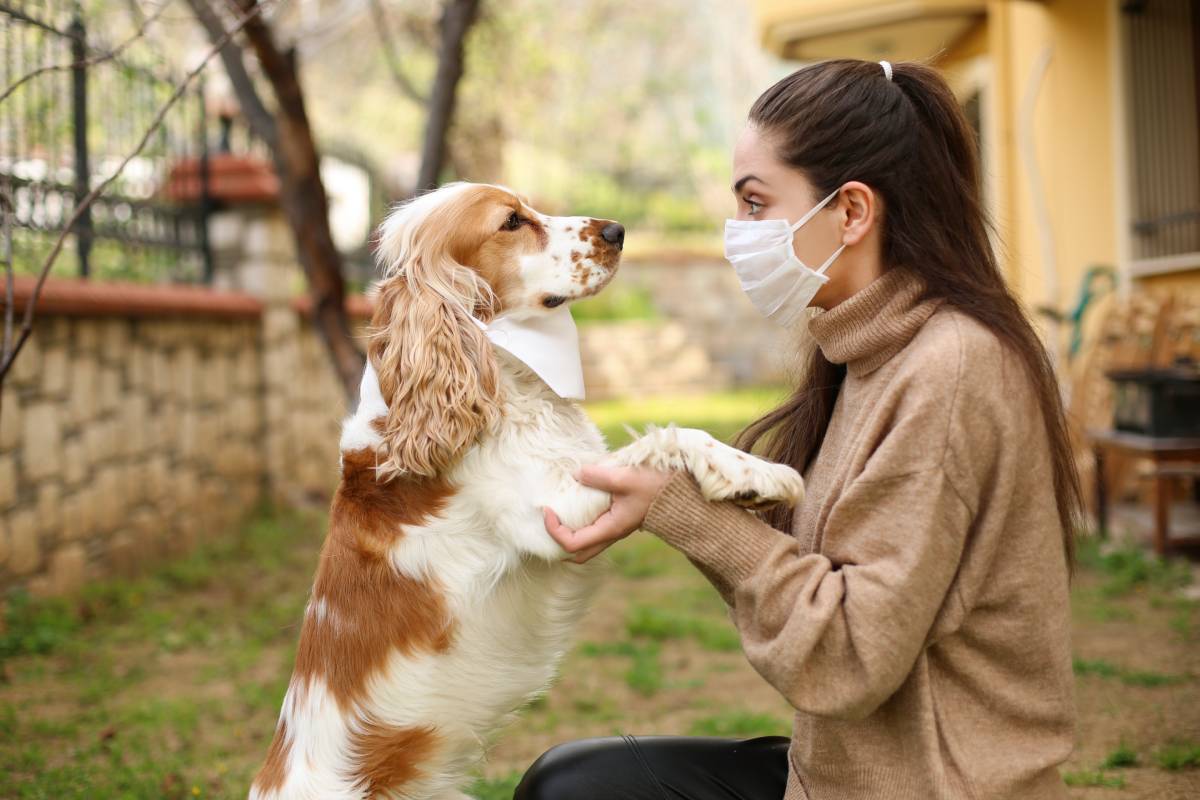
Coronaviruses are constantly evolving, switching and expanding host species, and, in the last few decades, novel coronaviruses have emerged in humans, domestic animals, and wildlife. The SARS-CoV-2 virus itself is thought by some to have originated in bats, crossing over to intermediate animal hosts (snake or pangolin) before infecting humans [1] and resulting in the global pandemic which to date has killed over 6 million individuals worldwide. While a definitive origin has not been found, one leading hypothesis of the genesis of COVID transmission into humans is a zoonotic origin, i.e. from animals.
So far, SARS-CoV-2 has infected a number of animals. In addition to domestic animals, infections have been found in wild animals including minks, ferrets, big cats, great apes, and white-tailed deer[2]. A few of these species have been identified to date as transmitting SARS-CoV-2 to humans. In the first year of the pandemic, studies demonstrated that mink were capable of infecting humans with the SARS-CoV-2 virus [3,4]. Thereafter, pet hamsters were shown to transmit SARS-CoV-2 to humans [5]. In addition, a case has also recently been published of transmission to humans from white-tailed deer, who are particularly vulnerable to SARS-CoV-2 infection [6,7]. Conversely, COVID-19 can be transmitted from humans to animals. Critically, this is likely to amplify viral mutagenesis, and, in turn, result in the re-infection of humans with more virulent forms of the virus [8].
High density environments that favor interspecies interactions – such as farms, markets, and animal shelters and kennels – have likely precipitated the emergence and transmission of coronaviruses by generating a large enough animal population susceptible to coronavirus circulation and spillover across species [9]. This is directly supported by findings that COVID-19 is far more prevalent in kennels than the rest of the dog population [10]. In addition, commercial agriculture has also led to many domestic animals living close to humans, possibly driving the emergence of key viruses from cattle (OC43) and camelids (229E and MERS). Finally, the rise of domestic animals populations has also similarly contributed the spike in COVID transmission from animals to humans. This trend is exacerbated by the fact that when animals are kept under poor stressful conditions (e.g. in overcrowded environments or frequently being transported), their experienced stress weakens their immune systems, rendering them even more susceptible to infections [11].
Accordingly, the concept of One Health – a blanket strategy calling for “the collaborative efforts of multiple disciplines working locally, nationally, and globally, to attain optimal health for people, animals and our environment” – has been highlighted by COVID-19 and reports of human-animal transmission. To this end, first, personnel working closely with wildlife should be trained to implement measures that reduce the risk of disease transmission between and across people and animals, per World Health Organization (WHO) directives. This should include good hygiene practices for hunters and butchers [12]. Second, the public should be educated about what to do when entering in contact with wildlife. As a general precaution, people should not approach wild animals, instead choosing to notify wildlife authorities if an animal needs help. Third, it is critical to safely dispose of food and other human waste to avoid attracting wildlife, and, if possible, keeping domestic animals away from wildlife as well, all the while reducing people’s dependence on domestic animals. Finally, collaboration between veterinarians and wildlife authorities should be encouraged. Such work should include promoting the monitoring of wildlife and, in the context of COVID-19 specifically, the sampling of wild animals known to be potentially susceptible to SARS-CoV-2, sharing all genetic sequence data, and reporting confirmed animal SARS-CoV-2 cases, among others [2].
Efforts to monitor coronaviruses in the wild are currently underway (including the Viral Genome Project and PREDICT programs). These are key to identifying new viruses with zoonotic potential and dissecting potential spillover pathways [13]. Further research is warranted, in addition, to more fully understand and respond to cross-species transmission dynamics [14].
References
- Mahdy, M. A. A., Younis, W. & Ewaida, Z. An Overview of SARS-CoV-2 and Animal Infection. Frontiers in Veterinary Science (2020). doi:10.3389/fvets.2020.596391
- Joint statement on the prioritization of monitoring SARS-CoV-2 infection in wildlife and preventing the formation of animal reservoirs. Available at: https://www.who.int/news/item/07-03-2022-joint-statement-on-the-prioritization-of-monitoring-sars-cov-2-infection-in-wildlife-and-preventing-the-formation-of-animal-reservoirs.
- Pomorska-Mól, M., Włodarek, J., Gogulski, M. & Rybska, M. Review: SARS-CoV-2 infection in farmed minks – an overview of current knowledge on occurrence, disease and epidemiology. Animal (2021). doi:10.1016/j.animal.2021.100272
- Munnink, B. B. O. et al. Transmission of SARS-CoV-2 on mink farms between humans and mink and back to humans. Science (80-. ). (2021). doi:10.1126/science.abe5901
- Haagmans, B. L. & Koopmans, M. P. G. Spreading of SARS-CoV-2 from hamsters to humans. Lancet 399, 1027–1028 (2022). doi:10.1038/s41586-021-04353-x
- Pickering, B. et al. Highly divergent white-tailed deer SARS-CoV-2 with potential deer-to-human transmission. bioRxiv 17 (2022). doi:10.1101/2022.02.22.481551
- Hale, V. L. et al. SARS-CoV-2 infection in free-ranging white-tailed deer. Nat. 2022 6027897 602, 481–486 (2021).
- He, S., Han, J. & Lichtfouse, E. Backward transmission of COVID-19 from humans to animals may propagate reinfections and induce vaccine failure. Environmental Chemistry Letters (2021). doi:10.1007/s10311-020-01140-4
- Plowright, R. K. et al. Pathways to zoonotic spillover. Nature Reviews Microbiology (2017). doi:10.1038/nrmicro.2017.45
- Naylor, M. J., Monckton, R. P., Lehrbach, P. R. & Deane, E. M. Canine coronavirus in Australian dogs. Aust. Vet. J. (2001). doi:10.1111/j.1751-0813.2001.tb10718.x
- Oreshkova, N. et al. SARS-CoV-2 infection in farmed minks, the Netherlands, April and May 2020. Eurosurveillance (2020). doi:10.2807/1560-7917.ES.2020.25.23.2001005
- CODE OF HYGIENIC PRACTICE FOR MEAT 1 CAC/RCP 58-2005. The National Institute for Communicable Diseases. Available at: https://www.nicd.ac.za/wp-content/uploads/2018/05/Code_of_Hygienic_Practice_for_Meat_CAC_RCP_58-2005.pdf
- Global Virome Project. Available at: https://www.globalviromeproject.org/.
- Animals and COVID-19 | CDC. Available at: https://www.cdc.gov/coronavirus/2019-ncov/daily-life-coping/animals.html.

